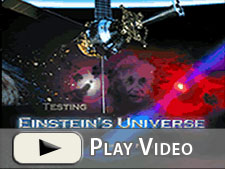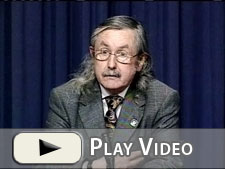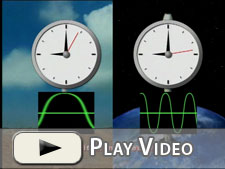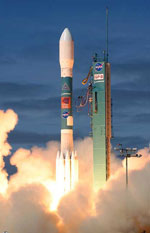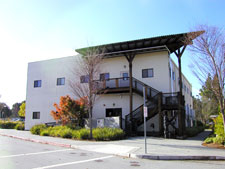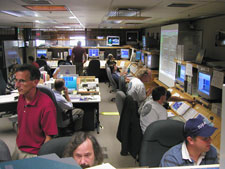Frequently Asked Questions — Updated 18 June 2014
On this page:
- Questions Grouped by Category
- General Information Questions & Answers
- Program Status and the Experimental Results Questions & Answers
- History, Funding & Experiment Rationale Questions & Answers
- Experimental Design & Unique Technologies Questions & Answers
- Spacecraft and Mission Operations Questions & Answers
- Spacetime, Gravitation, Relativity,& Cosmology Questions & Answers
Questions Grouped by Category
General Information Questions:
- Where can I find an overview or summary that succinctly describes the Gravity Probe B experiment?
- Is there a video or DVD describing the GP-B experiment that I can order?
- Do you have educational materials about GP-B that teachers or educators can order?
- Where can journalists and members of the press or media find information, photos and video clips to create stories about GP-B?
- Where can I find articles or stories that have been written about GP-B?
- Where can I find scientific and technical publications written about the science and technologies of GP-B by members of the GP-B team?
- How do I obtain permission to use diagrams, photos or videos from the GP-B Image & Media Archives in a scientific book, textbook, journal article, television show, movie or other publicly available publication or production?
Program Status and Experimental Results Questions:
- What is the current status of the GP-B program and the data analysis effort?
- How can I obtain a copy of the GP-B final experimental results?
- How can I obtain a copy of the data collected from the GP-B spacecraft & science instrument?
- Is anyone writing a full account of the GP-B experiment and its scientific and technological achievements?
History, Funding & Experiment Rationale Questions:
- Is the GP-B experiment a NASA program or a Stanford program?
- Who funded GP-B and how much has it cost?
- Where can I find information about the history and management of the GP-B program and team?
- Haven't Einstein's theories already been experimentally validated—why perform another test of Einstein?
- Was there a Gravity Probe A (GP-A), and if so, what kind of experiment was it?
- Has the GP-B program or team won any awards?
Experimental Design & Unique Technologies Questions:
- I've heard that GP-B had several "near-zero" requirements; what does this mean?
- What is the importance of the GP-B guide star and how was it selected?
- What were some of the main technological challenges that had to be solved in order to carry out the GP-B experiment?
- What technological or other spin-offs have resulted from GP-B?
Spacecraft and Mission Operations Questions:
- When and where was GP-B launched, and where can I find photos, video or news clips of the launch?
- Why did Gravity Probe B have a one-second launch window?
- Where was the spacecraft built, and who built it?
- Where is the GP-B Mission Operations Center (MOC) for controlling the spacecraft in orbit?
- Now that the experiment is finished, is anyone still using or controlling the spacecraft?
- Can I still track/view the GP-B spacecraft in the night sky?
- How long will the spacecraft remain in orbit and what will become of it?
Spacetime, Gravitation, Relativity,& Cosmology Questions:
- Can you answer a question I have about spacetime or some aspect of gravity, special or general relativity, cosmology, etc.?
- Can you recommend some references that will help me learn more about spacetime, gravitation, relativity, cosmology etc.?
Answers to General Information Questions:
- Where can I find an overview or summary that succinctly describes the Gravity Probe B experiment?
- Is there a video or DVD describing the GP-B experiment that I can order?
- Do you have educational materials about GP-B that teachers or educators can order?
- Where can journalists and members of the press or media find information, photos and video clips to create stories about GP-B?
- Where can I find articles or stories that have been written about GP-B?
- Where can I find scientific and technical publications written about the science and technologies of GP-B by members of the GP-B team?
- How do I obtain permission to use diagrams, photos or videos from the GP-B Image & Media Archives in a scientific book, textbook, journal article, television show, movie or other publicly available publication or production?
Our two-page PDF flyer entitled GP-B in a Nutshell provides a brief overview of the GP-B program, including sections on the history, technologies, science, mission and legacy of the program. If you want something more visual with less words, you can download a PDF copy of our GP-B in a Nutshell Slideshow In addition, the various sub-sections of the Mission Tab on this Web site provide a reasonably succinct, but comprehensive overview of GP-B. Lastly, the 24-page Executive Summary from our Post-Flight Analysis—Final Report to NASA, also available as a PDF download provides a very comprehensive overview of GP-B.
Yes there is. Norbert Bartel, Professor of Astrophysics and Space Sciences at York University in Toronto, Canada, has produced and directed a 26-minute documentary movie about the Gravity Probe B experiment entitled, Testing Einstein's Universe. You can view a Flash Video version of this movie from the Media Gallery, in the Resources Tab on this Web site.
This movie, along with 80 minutes of additional video about relativity, physics, and astronomy is also available on a DVD. For more information about this DVD, see Norbert Bartel's Astronomy Films Web page. If you would like to purchase this DVD online, it is available through the York University Bookstore.
A number of years ago, we created a 40-page GP-B Educator's Guide, a set of GP-B Litho Cards and a three-panel Spacetime Poster. We used to mail these items to teachers and educators on request. Unfortunately, we no longer have the budget or staff to fulfill orders for these materials by mail, but they are all available as Adobe Acrobat PDF downloads on the Resources for Educators page of this Web site.
The Press & Media Resources page of this Web site includes links to GP-B program information, the GP-B Pre-Launch Electronic Press Kit, press releases, reports, graphics and photos, video clips, and links to selected feature articles about GP-B.
In the The Press & Media Resources page of this Web site, you'll find links to a number of selected feature articles about GP-B, along with press releases and other information about GP-B.
The GP-B Scientific Papers page under the Resources Tab on the Web site includes an archive of GP-B scientific and technical papers, arranged in categories.
Since the GP-B program was primarily funded by NASA, most photos, diagrams, illustrations and media files that you find on this website are publicly available free of charges/royalties for use in educational (i.e., non-commercial) publications and productions.
If you require a formal letter of permission for use of any particular image or media file from the GP-B Image and Media Archives, or if you need a higher-resolution image file than one you find on the website, please contact us at the email address or phone number shown below.
Email: support@relgyro.stanford.edu
Phone: 650-725-4104
Answers to Program Status and Experimental Results Questions:
- What is the current status of the GP-B program and the data analysis effort?
- How can I obtain a copy of the 31 May 2011 issue of PRL containing the GP_B final results paper?
- How can I obtain a copy of the data collected from the GP-B spacecraft & science instrument?
- The 14 January 2005 update describes the data collection and telemetering process.
- The 22 July 2005 update describes the data reduction and data analysis process.
- A summary page describing the project and data
- GP-B Level 2 Data Archive Page
- NSSDC general inquiries & data requests
- Is anyone writing a full account of the GP-B experiment and its scientific and technological achievements?
The GP-B program formally concluded with a press conference and public announcement of the final results at NASA Headquarters in Washington D.C. on May 4, 2011. The final results were published in the 31 May 2011 issue Physical Review Letters.
See the Current Status section under the Status Tab on this Web site for complete converage of the GP-B final results, a copy of the 31 May 2011 PRL paper containing the final results, stories and video of the GP-B Final Results NASA Press Conference and much more.
Other sections under the Status Tab include a complete archive of all the status updates we have posted since 1997, the latest GP-B Mission News story and a partial archive of previous news stories.
A copy of this paper is available in Current Status section under the Status Tab on this Web site, along with other related documents, images and video.
In July 2007, we delivered an archive of raw GP-B data to the National Space Science Data Center (NSSDC) at the Goddard Space Flight Center in Greenbelt, MD. Since that time, the staff at the NSSDC has processed and integrating the GP-B data into the NSSDC data archives.
The data in that archive is classified as "Level 2 Science Instrument Source Data." This means that the data has been lightly processed. In other words, the individual data elements have been separated out from the compressed format in which the data was telemetered back to Earth, and they have been tagged and entered into a database. You can learn more about how the GP-B data was collected, stored, and processed from two past GP-B updates on our Web site:
The NSSDC Web site currently has two pages about GP-B, plus a general information & data inquiries page:
You can also contact Dr. Alfred B. Schultz at the NSSDC if you have further questions regarding the status of GP-B data archives there.
Yes. GP-B Principal Investigator, Francis Everitt, and other former members of the GP-B research and development team are in the process of compiling a set of 22 refereed papers covering various aspects of the science and technology of GP-B. These papers will be combined to form a Special Volume to be published by Classical and Quantum Gravity in the Summer of 2015.
Answers to History, Funding & Experiment Rationale Questions:
- Is the GP-B experiment a NASA program or a Stanford program?
- Who funded GP-B and how much has it cost?
- Where can I find information about the history and management of the GP-B program and team?
- Haven't Einstein's theories already been experimentally validated—why perform another test of Einstein?
- the perihelion shift of Mercury’s orbit
- gravitational deflection of light by a massive body
- the analogous radar time delay (Shapiro effect)
- the change in orbital frequency of the Taylor-Hulse binary pulsar based on the emission of gravitational radiation.
- Why perform another test of Einstein's Theory? in the GP-B Overview page of the Mission Tab on this Web site.
- An Unfinished Job in the Testing Einstein page of the Spacetime Tab on the Web site.
- Was there a Gravity Probe A (GP-A), and if so, what kind of experiment was it?
- The primary objective of the GP-A mission is to test a fundamental postulate of gravitation and relativity theories called the "Principle of Equivalence" to an accuracy of 200 parts per million by testing whether the principle holds for extended regions of space where the gravitational acceleration has considerably different values.
- A secondary objective is the demonstration of a hydrogen MASER clock in space.
- Has the GP-B program or team won any awards?
Gravity Probe B is a Stanford University physics and engineering experiment that from 1963 - 2008 has been funded and sponsored by NASA. At 45 years, it is the longest-running continuous experiment at both Stanford and NASA. NASA made Stanford its prime contractor on this mission, and Stanford in turn subcontracted the development of the probe and spacecraft to Lockheed Martin Missiles and Space Company. (GP-B was the first mission in which NASA made a university its prime contractor—a role that NASA typically confers on an aerospace company.)
NASA funding and sponsorship of GP-B ended on September 30, 2008. The final phase of the program—completion of the data analysis and publication of the final experimental results—is now being supported and sponsosred by a non-NASA agency.
You can read an overview of the history and funding of GP-B on the History and Management page in the Mission Tab of this Web site.
For a detailed account, view/download a PDF copy of the GP-B Post-Flight Analysis—Final Report to NASA, and see Chapters 2 and 6.
From 1963 - 2007, Gravity Probe B was funded and sponsored by NASA. The total funding amount over this 44-year period was approximately $750 million.
From January - September 2008, GP-B was funded in equal $500,000 shares ($1.5 milliion total) by a private donor, Stanford University and NASA.
Beginning in October 2008, a different funding agency committed $2.7 million to support completion of the data analysis and conclusion of the program, now anticipated at the end of 2009.
You can read an overview of the history and funding of GP-B on the History and Management page in the Mission Tab of this Web site.
For a detailed account, view/download a PDF copy of the GP-B Post-Flight Analysis—Final Report to NASA, and see Chapters 2 and 6.
You can read an overview of the history and management of GP-B on the History and Management page in the Mission Tab of this Web site.
For a detailed account, view/download a PDF copy of the GP-B Post-Flight Analysis—Final Report to NASA, and see Chapters 2 and 6.
With the general theory of relativity, acclaimed as one of the most brilliant creations of the human mind, Einstein forever changed our Newtonian view of gravity. However, even though it has become one of the cornerstones of modern physics, general relativity has remained the least tested of Einstein’s theories.
More specifically, Einstein’s general theory of relativity (GR) has passed four important tests since its inception in 1916:
The “equivalence principle,” a key assumption underlying Einstein’s theory, has also received strong experimental support through NASA’s 1976 Gravity Probe A (GP-A) redshift clock experiment and NASA lunar laser ranging free-fall measurements. Nevertheless, it is widely believed that our present theories of gravity will eventually be seen as limiting cases of a unified theory in which all four fundamental forces of nature (strong, weak, electromagnetic, and gravity) become comparable in strength at very high energies. But there is no consensus as to whether it is GR, particle physics, or both that must be modified—let alone how.
In this regard, a better understanding of spin, the third of nature’s most fundamental mysteries (along with mass and charge) may provide a breakthrough. Frame-dragging, the gravitational analog of magnetism, is central to modern astrophysics as the probable engine for the vast jets of gas and magnetic field ejected from the regions around super-massive black holes as well as keeping those jets aligned across scales of mega-parsecs. By focusing on spin, GP-B differs from all the tests of GR previously noted, and it offers by far the best prospect for a trustworthy measurement of frame-dragging, the key to understanding the most violent phenomena in astrophysics and the origin of inertia itself.
See also:
Yes, Gravity Probe B is the second NASA-sponsored, space-borne basic physics research experiment on gravity. The first one, called Gravity Probe A, was carried out in 1976.
Gravity Probe A was a joint program of NASA-Marshall Space Flight Center and the Astrophysical Observatory of the Smithsonian Institution. It was also the first test in space to explore the structure of space and time. It is known to many scientists as the "Red Shift Experiment" or the "Clock Experiment." The Gravity Probe A (GP-A) payload was launched on June 18, 1976 at 7:41 A.M. Eastern Daylight Time from the NASA-Wallops Flight Center in Virginia. Unlike Gravity Probe B, GP-A was only in space for one hour and 55 minutes in an elliptical flight trajectory over the Atlantic. It attained a maximum height of 6200 miles above the earth before impacting into the Atlantic Ocean. Why was GP-A in space for such a short time? No accidents on the launch pad - it was part of the design of the experiment (unlike Gravity Probe B, which will be in a polar orbit over the Pacific Northwest for nearly two years). To yield an accurate and inexpensive experiment, GP-A required a flight path with a large change in the gravitational potential to provide a large gravitational redshift, and it required a flight path that kept the flight Hydrogen MASER in contact with the ground Hydrogen MASER during data collection.
The official, formal Mission Objectives of Gravity Probe A are listed by NASA as the following:
For more information, read The basic scope of the Gravity Probe A experiment summarized from NASA News, 1976. Or read Gravitation Research Using Atomic Clocks in Space by Dr. R. F. C. Vessot, Smithsonian Astrophysical Observatory Principal Investigator, Gravity Probe A.
In the GP-A mission, all payload systems appeared to have functioned properly, including the newly-developed hydrogen MASER, NASA officials reported. Successful tracking was maintained throughout the mission. NASA's Post Launch Mission Operation Report of GP-A dated February 14, 1977, states the following:
The Principal Investigator, Dr. R. F. C. Vessot began data reduction and has reported achieving 150 parts per million accuracy. The pre-launch accuracy objective of 200 parts per million from the data has thus been surpassed. Based on this report, the mission is adjudged as successful.
To learn more about Dr. Vessot's current research, have a look at The Hydrogen Maser Clock Project home page at the Harvard-Smithsonian Center for Astrophysics.
See also: The Gravitational Redshift Experiment in the Spacetime Tab—Testing Einsten page of this Web site.
Yes, the GP-B program, team, leaders and technologies have won a number of awards over the years.
See the Awards & Honors section in the Broader Legacy of GP-B page of the Mission Tab on this Web site for details.
In addition, six of the animations displayed on this Web site won a 2008 Bronze Telly award. You can read about this award on the Fall 2008 GP-B Mission News page.
Answers to Experimental Design & Unique Technologies Questions:
- I've heard that GP-B had several "near-zero" requirements; what does this mean?
- What is the importance of the GP-B guide star and how was it selected?
- What were some of the main technological challenges that had to be solved in order to carry out the GP-B experiment?
- What technological or other spin-offs have resulted from GP-B?
Designing a physics experiment involves a basic choice: maximize the effect to be measured, or minimize the “noise” that obscures it. For the Gravity Probe-B experiment, that choice was moot because Einstein's relativistic effects that literally “roar” near black holes whisper almost inaudibly here on earth. Thus, implementing the GP-B experimental design required meeting seven near-zero design constraints—three near-zero constraints on the gyro rotors, which had to be near-perfect spheres, with uniform superconductive coatings and virtually no imperfections in shape and density, and four near-zero constraints on the pristine space-borne, cryogenic laboratory, which housed the gyros and shielded them from any sources of noise or interference that might distort the results—solar radiation, atmospheric friction, magnetic fields, electro-magnetic signals radiating from Earth, and so on. The table below summarizes these seven near-zero constraints, showing the tolerance required and the tolerance actually achieved for each one during the mission.
Experimental Variable Tolerance Requirements Tolerances Achieved During Mission Gyroscope Rotor Near Zeros Mechanical Sphericity 50 nanometers (2 micro inches) <10 nanometers (< 0.4 microinches) Material Homogeneity 3 parts in 106 3 parts in 107 Electrical Sphericity 5 parts in 107 <5 parts in 107 Probe Environment Near Zeros Temperature 1.95 kelvin (-271.2° Celsius or -456.2° Fahrenheit) 1.8 kelvin (-271.4° Celsius or
-456.4° Fahrenheit)Non-Gravitational Residual Acceleration Less than 10-10 g Less than 5 x 10-12 g Background Magnetic Field 10-6 gauss Less than 10-7 gauss Probe Pressure 10-11 torr Less than 10-11 torr
Conceptually, the GP-B experiment is simple: Place a gyroscope and a telescope in a polar-orbiting satellite, 642 km (400 mi) above the Earth. (GP-B actually uses four gyroscopes for redundancy.) At the start of the experiment, align both the telescope and the spin axis of each gyroscope with a distant reference point—a guide star. Keep the telescope aligned with the guide star for a year, as the spacecraft makes over 5,000 orbits around the Earth, and measure the change in the spin-axis alignment of each gyro over this period.
The problem is that stars are not fixed points on the sky; they are continually in motion, and the motion of the GP-B guide star had to be addressed in the experimental design of GP-B. For this reason, it was necessary to select a guide star whose motion could be mapped relative to a quasar at the far distant edge of the universe. Quasars are so far away that they do appear fixed in the sky. This requirement, and others, placed significant limitations on the number of stars that could serve as the GP-B guide star. In fact, only three stars met all the necessary criteria, and from these, the star IM Pegasi was chosen as the GP-B guide star.
In Latin "Pegasi" means "of or in Pegasus," which is a constellation of stars easily seen high over head on autumn evenings throughout North America, Europe, and Asia. The designation "IM" is just a pair of letters chosen more or less sequentially to identify certain stars. The star IM Pegasi is barely bright enough to see with the naked eye under very dark and clear skies, but when observed in the microwave range, this star is often among the brightest in the sky. The microwave noise coming from this star makes it possible to use the methods of very-long-baseline interferometry (VLBI) to measure its position relative to several quasars that appear in the same region of the sky. In star catalogs, IM Pegasi has several alternative names, including: IM Peg, HR 8703, HD 216489, SAO 108231, BD +16 4831, FK5: 3829.
You can read a more detailed discussion about the criteria and process of selecting IM Pegasi in the Telescope & Guide Star section of the Extraordinary Technologies of GP-B page in the Technology Tab on this Web site.
See the Unique Tchnological Challenges and Solutions page in the Technology Tab on this Web site for answers to this question.
Like all NASA programs, GP-B has produced a number of spin-offs over the 45+ years it has been in existence. Some of these spin-offs are tangeable technologies, such as the porous plug, that have enabled other NASA missions. Other spin-offs, like the 85 Ph.D. dissertations at Stanford and 13 elsewhere are more intangeable, but in many ways more important.
You can read more details about the spin-offs and broader legacy of GP-B in a number of pages on this Web site, including:
Answers to Spacecraft and Mission Operations Questions:
- When and where was GP-B launched, and where can I find photos, video or news clips of the launch?
- Launch & Checkout page of the Mission Tab — Contains a complete summary of the launch, including a number of photos and video clips
- Launch section of the Image Gallery — Contains a complete collection of launch photos
- Movie Clips section of the Media Gallery — Contains a number of video clips of the launch, pre-launch press conference, launch preparation, and more
- Feature Stories section on the Press Information Page of the Resources Tab — Contains links to several magazine and newspaper articles published at the time of the GP-B launch
- Why did Gravity Probe B have a one-second launch window?
- Where was the spacecraft built, and who built it?
- Where is the GP-B Mission Operations Center (MOC) for controlling the spacecraft in orbit?
- Now that the experiment is finished, is anyone still using or controlling the spacecraft?
- Can I still track/view the GP-B spacecraft in the night sky?
- How long will the spacecraft remain in orbit and what will become of it?
The Gravity Probe B space vehicle was launched on Tuesday, April 20, 2004, at 9:57:24 AM Pacific Daylight Time. The space vehicle was launched using a Delta II rocket from Vandenberg Air Force Base in South-Central California. For more information about the launch, see the following sources on this Web site:
The spacecraft needed to be launched exactly into an orbit plane aligned with the guide star. how close "exactly" actually needs to be is defined by the science team, but it turns out to be around +/- 0.04 degrees of longitude (in rough terms). Note the plane of the guide star (a plane defined by the center of the earth, the north pole, and the guide star) is fixed or "inertial" in space. This plane does not rotate with the earth.
We know the earth rotates completely around (360 degrees) in 24 hrs (86400 seconds), which means the earth turns through (360 deg/86400 sec) 0.004 deg/sec. This means that you, me, and the rocket on the ground are constantly rotating around at this rate. So, in theory, it takes the earth 10 seconds to turn through 0.04 degrees, which is our maximum, theoretical "window" on any given day.
So why was our launch window one second instead of ten seconds? The maximum accuracy of the Delta II rocket is only about +/- 0.03 degrees. This now only leaves about 2 seconds of margin in our maximum theoretical window. Build in a factor of safety here and there for other considerations, namely, whether the rocket is launched half a second early or late, and you're left with a one-second window. There are also some second- and third-order effects to consider, but they are outside the scope of this discussion.
Stanford is Prime Contractor to NASA Marshall Space Flight Center with a major subcontract to Lockheed Martin Missiles and Space. There have been in the vicinity of 500 subcontracts from Stanford and Lockheed for different individual subsystems, including, incidentally, a subcontract to the Harvard Smithsonian Astrophysical Observatory for refined measurements of the proper motion of the GP-B guide star. Essentially, there were two main groups responsible for building the entire Gravity Probe B satellite: Stanford and Lockheed. Stanford University built the Science Instrument which consists of the gyroscopes and their systems, the quartz block, the SQUIDs and the telescope. Some of the electronics for collecting and sending the science data were also built at Stanford. Many of the electronic components for GP-B as well as the Dewar, Probe and Spacecraft were built nearby by Lockheed Martin Missiles and Space. The Ground Station, which receives all data from the satellite after launch, is located on the Stanford University campus.
In 1995, a two-story "temporary" blockhouse building was erected on the Stanford campus to house the GP-B administrative offices and Mission Operations Center (MOC), This building was located across the street from the W.W. Hansen Experimental Physics Lab (HEPL), where the GP-B gyroscopes, SQUID readout electronics, on-board telescope and other critical components of the Science Instrument Assembly and payload were designed and developed. The first photo to the right shows the outside of the GP-B building.
The MOC occupied the entire central core of the second floor of this building, with administrative and science offices surrounding it. The lower floor also contained offices and a conference room. Throughout the launch and flight mission, the GP-B spacecraft was monitored and controlled from the MOC, as shown in the second photo on the right.
The GP-B flight mission concluded at the end of September 2005, when the last of the liquid helium in the dewar was exhausted. Stanford's master plan for the campus called for a new 8.2 acre science and engineering quad, dubbed SEQ2, to be built on and around the location where the two-story GP-B blockhouse building sat, as well as the entire HEPL lab across the street and the Ginzton applied physics building next door. .
In June 2006, the first phase of this construction began with the demolition of the GP-B blockhouse building. You can view photos of the demolition in our GP-B Status Update for June 7, 2006. In prepartaion for this demolition, the GP-B MOC was dismantled and then re-assembled in another building, where it remained throughout the data analysis phase of the GP-B mission. In 2010, the GP-B MOC was shut down and dismanteled. (See Question #5 below).
No. In December 2010, the decision was made to decomission (shut down) all systems on the GP-B spacecraft. The final command to turn off all communications wa sent to the GP-B spacecraft on Wednesday, December 8, 2010 at 10:00am Pacific Standard Time. The spacecraft will contine to orbit Earth for a number of years, but eventually its orbit will degrade, and the spacecraft will burn up and disintegrate during re-entry to the Earth's atmosphere. (See Question #7 below.)
Yes. NASA has a Java-based satellite tracking web page called JSAT 3D. There are also other satellite tracking websites, such as Visual Sat-Flare Tracker 3D that can show the current position of many satellites, including GP-B. Lastly, there are a number satellite tracking apps, many of them free such as Satellite Watcher, that you can download and use on iOS and Android mobile phones and tablets.
Evenutally, the spacecraft's orbit will decay, at which time it will re-enter the Earth's atmosphere and burn up. We anticipate that the spacecraft will remain in orbit for at least 30 years before this happens. You can read a more detailed story about the end of the GP-B spacecraft in the GP-B Mission News of May 27, 2005.
Answers to Spacetime, Gravitation, Relativity, & Cosmology Questions:
- Can you answer a question I have about spacetime or some aspect of gravity, special or general relativity, cosmology, etc.?
- Can you recommend some references that will help me learn more about spacetime, gravitation, relativity, cosmology etc.?
The GP-B program formally concluded in 2011, and we no longer have the staff or resources to respond to such questions. We suggest that you take a look at the Spacetime Tab on this Web site, where hopefully, you will find at least a partial answer, along with references for further reading.
The contents of our Spacetime Tab was written by James Overduin, a theoretical physicist who was a visiting scholar associated with the GP-B/STEP teams here at Stanford for a number of years. The contents of the Spacetime Tab that James created comprises an excellent, five-part document, entitled: Spacetime: From the Greeks to Gravity Probe B. It covers early notions of space and time before Einstein, Einstein's spacetime and related concepts, an overview of experiments that have been performed to test Einsten's theory of general relativity, a summary of current issues and directions of research concerning gravity, spacetime and spin, and a collection of references for further reading.
In addition to Dr. Overduin's spacetime overview, the Spacetime Tab also includes a sixth section called Relativity Q&A, which is a compendium of questions and answers about special and general relativity provided by NASA Astronomer, Sten Odenwald. The Relativity Q&A were excerpted from the Astronomy Cafe Web site created by Dr. Odenwald in the 1990s. He used to answer questions online via the Astronomy Cafe, but he no longer has time to do this. Rather, Dr. Odenwald has written a number of books, and he now refers people to these books to learn more about the various topics covered in the Astronomy Cafe.
In the Further Reading page of the Spacetime Tab on this Web site, you will find a list of references—books, scientific papers, and other Web sites—on spacetime, relativity, Einstein, gravity and related topics.

